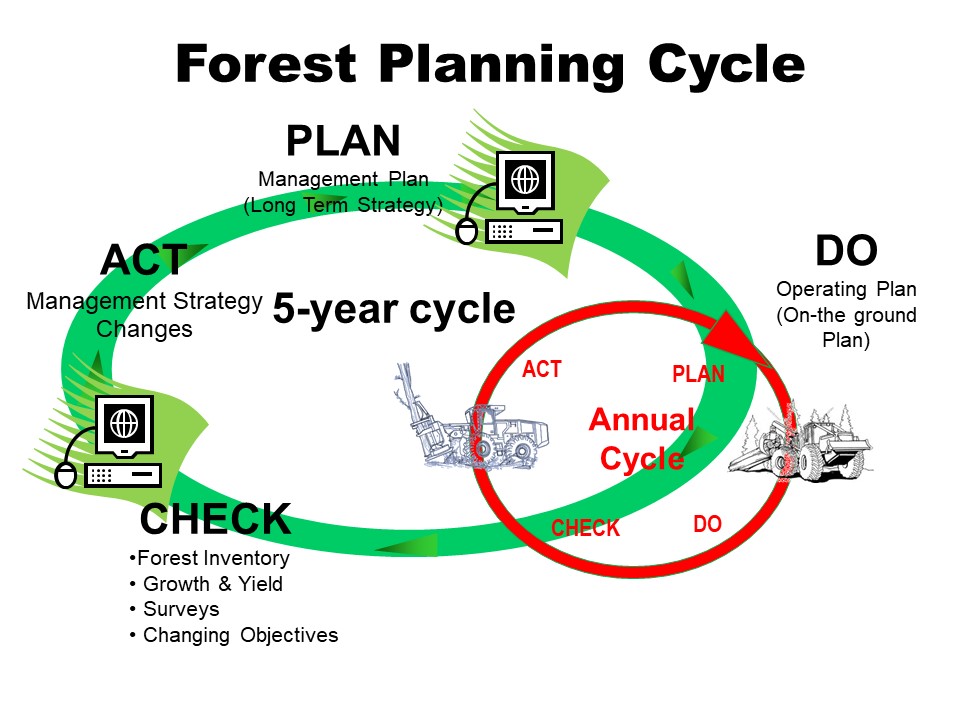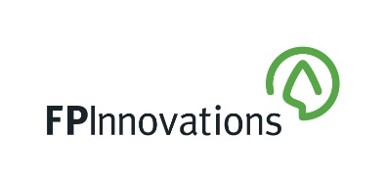Acadian’s forest lands have been supplying regional mills with timber for more than 100 years. Access to high quality, sustainably managed timber resources is important to Acadian’s customers and our other stakeholders.
Acadian’s commitment to sustainable forestry and the communities in which we operate is demonstrated through our long history of continually evolving forest management and operations that have been successfully certified to the Sustainable Forestry Initiative® (SFI®) program operations since 2000.

Acadian integrates environmental protection into our business processes and decisions, by following its Environmental FOCUS . This FOCUS includes full compliance with all applicable environmental legislation and regulations that affect our business.
In addition, Acadian lands have gone through Phase 1 environmental assessments to ensure any pre-existing disposal sites were identified and cleaned up. All of Acadian’s ongoing operations are regularly inspected to ensure compliance with regulations and best practices.

Sustainability of forest resources takes planning. Our forest management plans are used to evaluate how forestry activities will affect our timberlands for the next 80 to 100 years. The plans are used to calculate sustainable harvest levels, ensure habitat management and maintenance of forest biodiversity. Forest management plans are updated every 5-10 years to account for harvest, growth and silviculture as well as changes in understanding of forest management.

On an annual basis Acadian harvests trees on approximately 3% of its owned timberland. We use a variety of harvesting practices that promote and take advantage of natural regeneration. Annually, less than 1% of our productive forest area is harvested by clearcutting. If natural regeneration is not present on a clearcut site, forest renewal is accomplished through planting of native tree species.

Acadian’s operations are highly regulated. All operations are subject to federal, provincial/state, and local environmental laws and regulations relating to the protection of the environment, including regulations relating to forest practices, air, water, waste, hazardous substances and threatened or endangered species. Acadian benefits from a relatively stable regulatory regime within the regions we operate.
Our timberlands are managed consistent with the principles of sustainable forestry. Acadian maintains certification to the SFI® program on its timberlands to demonstrate our sustainable forestry commitment. Third party sustainable forestry audits are conducted annually as either surveillance audits or full re-certification audits. Third party certifications provide the public, Acadian’s customers, and environmental groups with knowledge that the assets are well managed in accordance with industry best practices.
The SFI® program is a comprehensive system of principles, objectives, and performance measures that provide our customers and the public assurance of the sustainability of our forests for current and future generations. This program includes requirements for the protection of wildlife, plants, soil and water quality. Public reports of audit results are available through the SFI® website. https://forests.org
| New Brunswick (Owned) | Maine (Owned) | Crown (Managed) | |
|---|---|---|---|
| Third-party certified forest - Hectares | 309,000 | 121,000 | 537,000 |
| Third-party certified forest - Acres | 761,000 | 300,000 | 1,326,000 |
| Third Party Certification Standard | SFI® | SFI® | SFI® |
| Year of Certification | 2000 | 2011 | 2000 |
| Certified (% Area) | 100% | 100% | 100% |
| Fiber considered PEFC Certified | 100% | 100% | 28%a |
| Standing Inventory (x 106 m³) | 27.1 | 11.8 | 47.3b |
| Annual Harvest Volumes (x 10³ m³) | 768 | 332 | 166c |
a. Only volume harvested by Acadian is included
b. Crown inventory is from 2012 Management Plan
c. Volume harvested for Licensee
Biodiversity in the forest is managed to maintain a range of broad forest cover types across the landscape over the entire 80-100 year planning horizon. Additionally, unique sites of high conservation value forest are noted and set aside (e.g. Shea Lake Reserve). Approximately 190,000 acres of our Maine timberlands are in a working forest conservation easement. The easement is held by the State of Maine and permits sustainable forest management while prohibiting development. This ensures that the landscape remains forested in perpetuity while providing all the services expected from the regular use of the forest. The lands we manage have extensive areas managed for water protection and wildlife habitat.

Acadian’s lands encompass more than 50 lakes, and more than 4,000 miles of rivers and streams that are all protected by riparian buffer zones to ensure water quality remains high. Best practices are used when it is necessary to cross streams to safeguard against potential sediments from reaching the watercourse.

Soil is the reservoir that holds the resources for tree growth, connecting the atmosphere, vegetation and water. It acts as an environmental filter cleaning water as it moves into aquifers and waterways. Soils are crucial for the production of wood that is fundamental to our business and essential for our communities.
Best practices for soil conservation include understanding where sensitive sites occur, timing operations to mitigate impacts on soil erosion and compaction, using techniques such as brush mats to avoid rutting and minimize damage to root systems of residual trees, and shutting down forest operations when conditions are extreme.
Acadian maintains relationships with national and regional research institutions and agencies to benefit from cooperative research. These connections allow us to take advantage of economies of scale in research that will result in identifying best practices to benefit forest management, wildlife management, pest management, harvesting, environmental protection, change detection and other elements of significance to the forest industry. We have long standing relationships with FP Innovations, The Cooperative Forest Research Unit at the University of Maine and Forest Protection Limited.
A project of regional interest is the large cooperative associated with the Healthy Forest Partnership designed to test an Early Intervention Strategy to reduce the effects of the Spruce Budworm while promoting reduced use of insecticides through very targeted applications. This project has the potential to save billions of dollars for the forest industry over 40 years (https://healthyforestpartnership.ca/).




